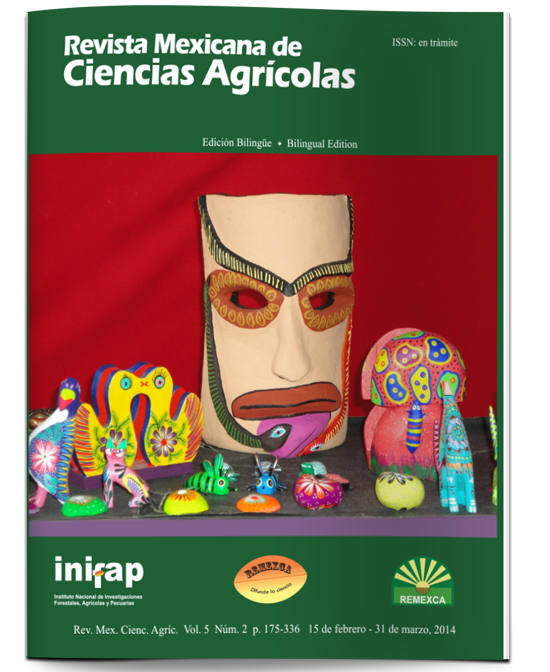Territorial and spatial diagnosis of beekeeping in the agro-ecological systems of the Laguna Region
DOI:
https://doi.org/10.29312/remexca.v5i2.961Keywords:
Apis mellifera L., foraging, remote sensing, beekeeping vegetationAbstract
Productive management of honey bees and the use of related technology has improved the practices developed in the different processes of this activity; however, shifting into other forms of focus and botanical origin determinations of honey and vegetation foraging by bees has been rare, hence this study was undertaken in order to determine the landscape-territorial space of beekeeping in the Laguna Region in 2011. The apiaries were geo-referenced using a Global Positioning System (GPS). In order to represent, cartographically the location and geographical distance of the different structures of interest of elementary beekeeping vegetation in a radius of 3 km from the apiary we used digital mapping of land use and vegetation of scale 1:250 000. According to the model of geographic information exists a relatively short distance between each apiary site, so that the flora present in the territorial spaces more competed by the bees. Gómez Palacio, Durango and Matamoros, Coahuila are the municipalities with the highest number of apiaries. The most important ecological mosaic is microphyll desert scrub associated with secondary vegetation. Mesquite is the most prominent wildlife species for beekeeping in the Laguna Region. Moreover, alfalfa, annual forage crops and horticultural conglomerate formed the most important cultivated plant for honeybees in this region.
Downloads
Downloads
Published
How to Cite
Issue
Section
License
The authors who publish in Revista Mexicana de Ciencias Agrícolas accept the following conditions:
In accordance with copyright laws, Revista Mexicana de Ciencias Agrícolas recognizes and respects the authors’ moral right and ownership of property rights which will be transferred to the journal for dissemination in open access. Invariably, all the authors have to sign a letter of transfer of property rights and of originality of the article to Instituto Nacional de Investigaciones Forestales, Agrícolas y Pecuarias (INIFAP) [National Institute of Forestry, Agricultural and Livestock Research]. The author(s) must pay a fee for the reception of articles before proceeding to editorial review.
All the texts published by Revista Mexicana de Ciencias Agrícolas —with no exception— are distributed under a Creative Commons License Attribution-NonCommercial 4.0 International (CC BY-NC 4.0), which allows third parties to use the publication as long as the work’s authorship and its first publication in this journal are mentioned.
The author(s) can enter into independent and additional contractual agreements for the nonexclusive distribution of the version of the article published in Revista Mexicana de Ciencias Agrícolas (for example include it into an institutional repository or publish it in a book) as long as it is clearly and explicitly indicated that the work was published for the first time in Revista Mexicana de Ciencias Agrícolas.
For all the above, the authors shall send the Letter-transfer of Property Rights for the first publication duly filled in and signed by the author(s). This form must be sent as a PDF file to: revista_atm@yahoo.com.mx; cienciasagricola@inifap.gob.mx; remexca2017@gmail.
This work is licensed under a Creative Commons Attribution-Noncommercial 4.0 International license.



